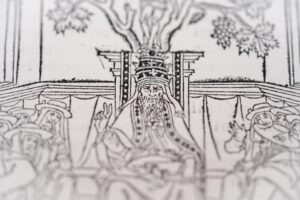With its natural beauty and Lost Horizon feel that appeals to seekers of spirituality, northern India’s Parvati Valley appears idyllic. Thousands of yogis, backpackers, and other free spirits visit this Himalayan enclave every year, hoping for enlightenment of some sort.
Yet beneath the picturesque, Parvati Valley has a dark side. Unexplained disappearances and deaths are common.
Background
Parvati Valley sits in the Western Himalaya, in the small state of Himachal Pradesh. The region is characterized by towering peaks, glaciers, hot springs, and rugged terrain. The valley features the Parvati River, the Pin Parvati Pass, famous treks like the Kheerganga, and ancient villages like Malana and Manikaran. The name Parvati comes from the Hindu goddess of harmony and love.

A temple in Manikaran in the Parvati Valley. Photo: Denis Vostrikov
The hippies are coming!
Aside from its spiritual significance and natural beauty, the Parvati Valley is home to an unofficial drug empire. Illegal hash and poppy plantations are scattered throughout the region and hidden at higher elevations. Locals also grow Datura, or devil’s weed, for its psychedelic properties. Sadhus (Hindu holy men) often use these substances ritualistically. The drugs also attract adventurous Westerners.
The Hippie movement of the early 1970s sparked a sudden fascination with Eastern cultures and religions, particularly Hinduism. Writer Harley Rustad describes the hippy trail, as an “overland thoroughfare for people looking for an intrepid journey to connect Europe with South Asia via the Middle East from the mid-1950s through the late 1970s.”
Concepts such as communal living, detachment from material goods, meditation, and getting in touch with the divine, beckoned backpacking hippies from around the world. They visited temples and holy sites, spoke to holy men, lived off the land, attended psychedelic raves in the forests, and took plenty of drugs.
Parvati Valley’s draw remains strong, with an average of 10,000 tourists every year.
Disappearances
As foreigners flooded through the valley, stories of attacks and disappearances proliferated. In 1991, two women (Australian Odette Houghton and Swiss Marianne Heer) vanished. Almost every year, at least one person went missing. It wasn’t just foreigners that were vanishing. Indian hikers also disappeared in the region.
Authorities determined a distinct pattern. Apart from a couple of women, most of the missing persons were male backpackers in their 20s or 30s. Perhaps the most famous missing person’s case is that of Justin Alexander Shetler, a 35-year-old American who went to the valley to live off-grid. Rustad’s captivating book on the disappearance, Lost in the Valley of Death, provides a vivid account of Shetler’s journey and details his last few days.
Shetler had quit his job to travel the world. He was no stranger to the wild, with survival training and extensive travel experience. He documented his nomadic life on a blog and on Instagram.
In the summer of 2016, he became acquainted with a sadhu. Soon they were hiking together, and Shetler expressed his excitement and admiration for his new friend. However, cryptically, in his last post to the world, he wrote “if I’m not back by then [mid-September], don’t look for me.”
Locals found Shetler’s belongings on the banks of the Parvati River and authorities concluded that he might have died in a landslide. Police arrested the sadhu but he hung himself in his cell before his release.
The entire case is murky, and many believe that the sadhu had something to do with Shetler’s death. In another cryptic post before his death, Shetler had written that “Police won’t arrest them, even for murder.”

The main export of the region. Photo: Shutterstock
Ill-prepared
But is a landslide or fall more likely? According to Rustad, “some blame the mountains” for Shetler’s death. The valley has some very deep gorges, sheer drops, extremely narrow roads, poorly marked or defined trails, and dangerous rapids.
Roads are treacherous and buses often drive dangerously. During monsoon season, it gets worse. Landslides are common, and the river can flood. It’s not unusual for foreigners to head out on a trek ill-prepared.
Crime
There have been many instances of robberies and murders in the region. Examples of high-profile incidents include the shooting of two German hikers in 2000 and an Israeli hiker who was stabbed to death in 2007. There are many more cases like these. Several media outlets determined that 20 to 30 foreigners are missing in the area, but locals say the number is much higher.
Because there are cannabis and poppy plantations throughout the valley, some hikers might have gone in search of them. It is possible that they saw things they shouldn’t have or they could have died from a drug overdose. Or perhaps foreigners just make easy targets for bandits.
Other famous cases
In August 2015, a 24-year-old Polish national named Bruno Muschalik disappeared. He was last seen in the village of Barshaini. Police arrested two people, from Delhi and Manali, in connection with the disappearance but it remains unclear what happened to Muschalik. His father continues to search to this day.

A beautiful river in the Parvati Valley. Photo: Shutterstock
In 2016, the Hindustan Times reported that seven hikers from Punjab were missing. In 2021, 32-year-old businessman Dhruv Aggarwal vanished while trekking to Kheerganga. Earlier in 2022, 22-year-old Vijay Massari Jadeja was hiking from Kheerganga with three friends before disappearing. There has been no news on these cases since.
India syndrome?
In his book, Rustad says that “beyond drugs, another form of illegal activity has long flourished in the valley: providing cover for people wishing to disappear.” Foreigners can become so enthralled with the land and its culture that they overstay their visas and disappear into the wild. There are cases of this in Jerusalem, where visitors become overwhelmed by the religious significance. Visitors sometimes vanish into the desert or even believe that they are the Messiah.
These are the same types of tourists who might come to India planning to leave behind the materialism and corruption they see in Western society. A desire to escape their lives and dreams of spiritual enlightenment might make for a dangerous mixture when combined with easy access to cannabis and opium.
The reasons behind the disappearances are not clear, but the Parvati Valley hides more than beauty among its high mountains.






